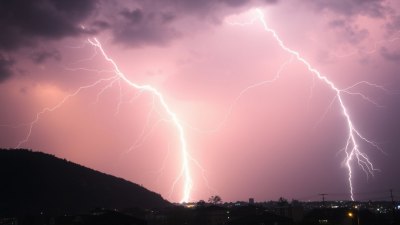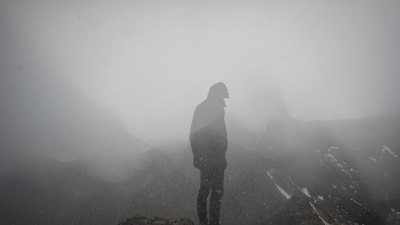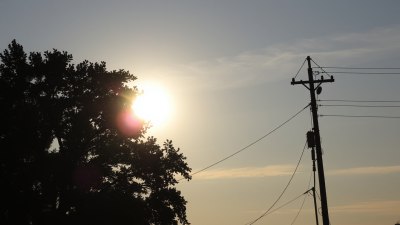Why Lightning Waits for Deep Thoughts and Wi-Fi Drops
Explore the intriguing connections between lightning, human cognition, and modern Wi-Fi drops in this in-depth analysis.

Lightning, that spectacular and often unpredictable natural phenomenon, has fascinated humans since ancient times. From myths to scientific studies, the enigma surrounding lightning is vast. Meanwhile, in our hyper-connected modern world, experiences like Wi-Fi drops often strike at the most inconvenient times. Intriguingly, these two seemingly unrelated events—lightning storms and Wi-Fi interruptions—sometimes intertwine, especially when deep human thought processes engage during stormy moments. This article delves into the reasons behind the saying, metaphorically or literally, that "lightning waits for deep thoughts and Wi-Fi drops," exploring the complex relationships between atmospheric phenomena, electromagnetic interference, and cognitive focus.
The Nature of Lightning
Lightning occurs when electrical charges accumulate in clouds and seek a path to neutralize the imbalance, either towards the ground or between clouds. This sudden electrical discharge produces a brilliant flash of light and is accompanied by thunder, the sound resulting from the rapid expansion of heated air. Various types of lightning exist, including cloud-to-ground, intra-cloud, and cloud-to-cloud. Each type involves complex interactions of atmospheric particles, temperature, humidity, and electrical charge distribution.
The buildup of electrical potential during a thunderstorm can reach tens to hundreds of millions of volts, creating conditions where the air becomes ionized, and a conductive path forms, allowing the electricity to equalize quickly. This natural process is essential in Earth's electromagnetic balance and can influence local and global weather patterns. Given its intensity and power, lightning often affects electronic systems, including modern Wi-Fi networks, by creating electromagnetic interference and electrical surges.
Electromagnetic Interference and Wi-Fi Drops
Wi-Fi signals rely on radio waves, a form of electromagnetic radiation typically operating within the 2.4 GHz and 5 GHz frequency bands. These signals can be sensitive to interference from various sources, including microwaves, Bluetooth devices, and notably, atmospheric phenomena. Lightning introduces massive bursts of electromagnetic energy across a wide spectrum, generating what is known as radio frequency interference (RFI). This RFI can disrupt the delicate balance of radio signals that Wi-Fi networks depend on.
During a thunderstorm, the electromagnetic noise created can saturate Wi-Fi receivers, causing drops, loss of connectivity, or intermittent slowdowns. While modern routers include shielding and error correction protocols, severe storms with intense electrical activity can overcome these defense mechanisms, leading to noticeable disruptions. Additionally, lightning strikes can induce power surges capable of damaging networking hardware and interrupting service entirely.
Most users experience these drops unpredictably, but they often correspond with moments of heavy atmospheric electrical activity. Surprisingly, these are also the times when human reflection and deep thought may intensify, as poor weather conditions encourage indoor contemplation.
The Psychology of Deep Thoughts During Storms
Humans have a long-standing cultural and psychological association between storms and introspection. Many people report feeling calmer or more reflective during heavy rain or thunder. This is possibly due to the reduced external stimuli, the natural rhythm of rain, and the sensory isolation that stormy weather brings. The ambient noise of rain and distant thunder can create a mood conducive to deep thinking, problem-solving, and even creativity.
Neuroscientific studies suggest that certain environmental factors, like the low, rhythmic sounds of rain or the gentle flicker of lightning, can encourage alpha brain wave activity, associated with relaxation and contemplative states. This state enhances focus and ideation, explaining why people often report bursts of insight during such conditions. The slower pace imposed by bad weather forces many indoors to disconnect temporarily from external distractions, increasing the probability of engaging in deep thought.
This mental state links metaphorically with the idea that 'lightning waits for deep thoughts'; the storm's intensity seems to align with heightened internal cognition, a poetic reflection on nature and mind interacting. At the same time, Wi-Fi drops and technological interruptions ironically force a digital pause, prompting individuals to rely on their thoughts instead.
Scientific Correlations Between Lightning and Cognitive Focus
While the romantic notion of lightning waiting for deep thoughts appeals broadly, scientific inquiry into environmental effects on cognition uncovers interesting correlations. Some researchers have explored how geomagnetic storms—disturbances in Earth's magnetic field caused by solar activity—impact human brain activity and mental states. Though lightning itself is localized, it follows within broader atmospheric electrical dynamics influenced by geomagnetic phenomena.
Studies suggest that during geomagnetic disturbances, some individuals experience changes in mood, cognition, and even increased instances of headaches or neurological symptoms. These findings indicate that electromagnetic activity in the environment could subtly interact with neural electrical processes. However, these effects remain controversial and vary widely between individuals.
Further, from a practical perspective, the unstable electromagnetic environment during thunderstorm-related lightning strikes may interfere with human-made electronic devices and could influence brainwave measurements in EEG studies. Whether this influence extends directly to cognitive capacity during lightning is not definitively proven, but the interplay of atmospheric electricity and brain function remains a topic of intrigue.
Lightning, Intuition, and Inspiration: A Cultural Perspective
Beyond scientific explanations, cultures worldwide have imbued lightning with symbolic meaning connected to sudden insight and revelation. The flash of lightning has long stood as a metaphor for a brilliant idea or inspiration striking the mind. This association underpins the poetic framing of lightning 'waiting' for moments of deep, meaningful thought.
Mythologies often depict lightning as a weapon or tool wielded by gods representing power and knowledge. For instance, Zeus in Greek mythology and Thor in Norse mythology both command lightning, symbolizing interaction between divine insight and earthly affairs. Artists and writers frequently reference lightning as emblematic of electric, transformative moments in creativity and understanding.
This symbolism reflects human fascination with how immediate and impactful thoughts can be—much like a lightning strike—seemingly arriving at once and shaking the foundations of previous understanding. It even spurs technological analogies, such as sudden 'lightbulb' moments or 'electrifying' ideas.
Technological Responses to Lightning’s Impact on Wi-Fi
Given the susceptibility of Wi-Fi and other wireless technologies to interference from lightning, engineers have developed various responses to mitigate these effects. Surge protectors, grounding techniques, and electromagnetic shielding help minimize damage to hardware from electrical surges. Additionally, advancements in wireless protocols include error detection, signal averaging, and dynamic channel selection to compensate for interference.
Architectural design also considers lightning risks; for example, positioning of antennas, cables, and routers in shielded or protected areas reduces exposure. In areas prone to frequent electrical storms, some networks incorporate redundant systems or backup connections to maintain service continuity during outages caused by lightning.
Despite these measures, real-time weather impacts on Wi-Fi remain a challenge, especially as societies grow increasingly wireless-dependent. Understanding the environmental context remains key to anticipating and designing resilient communications infrastructure.
The Experience of Wi-Fi Drops During Thoughtful Moments
The ironic punctuation of Wi-Fi drops during intense thinking or important online activity resonates with many. It feels as if technology conspires to interrupt moments of concentrated effort or creativity, yet this interruption can serve as a prompt to pause and reflect offline. Such unplanned breaks might foster a more focused or refreshed cognitive approach when connection is restored.
This experience illustrates a modern twist on an ancient dynamic: as humans engage in deep thought, natural phenomena like lightning remind us of forces beyond control, disconnecting us temporarily from digital flow and inviting a more grounded or contemplative engagement with our surroundings. It’s a subtle balance between technological reliance and natural rhythms.
Future Outlook: Integrating Natural Phenomena and Digital Resilience
As technology evolves, understanding and adapting to natural phenomena like lightning will be crucial. Emerging technologies in predictive weather modeling, real-time shielding, and robust wireless standards will enhance network reliability even during storms. Furthermore, innovative designs might incorporate adaptive AI protocols that adjust signal pathways to minimize dropout from atmospheric interference.
On the human side, recognizing the value of intermittent disconnection—whether guided by environmental noise or intentional practice—could foster healthier cognitive habits. Deep thought often requires conditions of mental calm unattainable when digital stimuli relentlessly compete for attention. Lightning storms and corresponding Wi-Fi drops may naturally carve out these precious intervals.
Integrating awareness of these phenomena into lifestyle and technology design encourages balance between connectivity and contemplative pause, enhancing both cognitive well-being and digital experience.
Ultimately, the poetic concept that "lightning waits for deep thoughts and Wi-Fi drops" captures a multifaceted interaction: the raw power of nature, the subtle workings of human cognition, and the vulnerabilities of technology in a shared environment.











